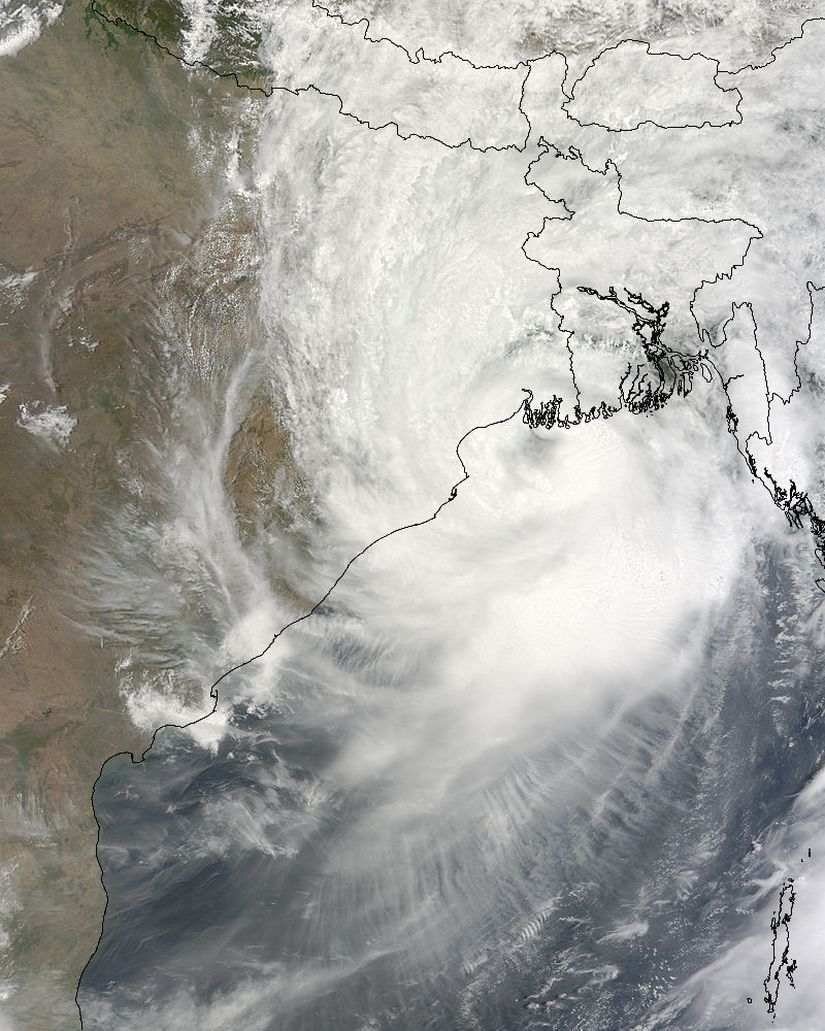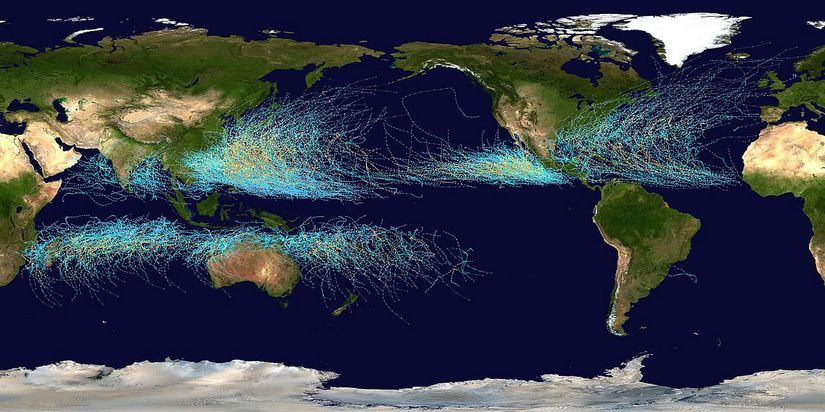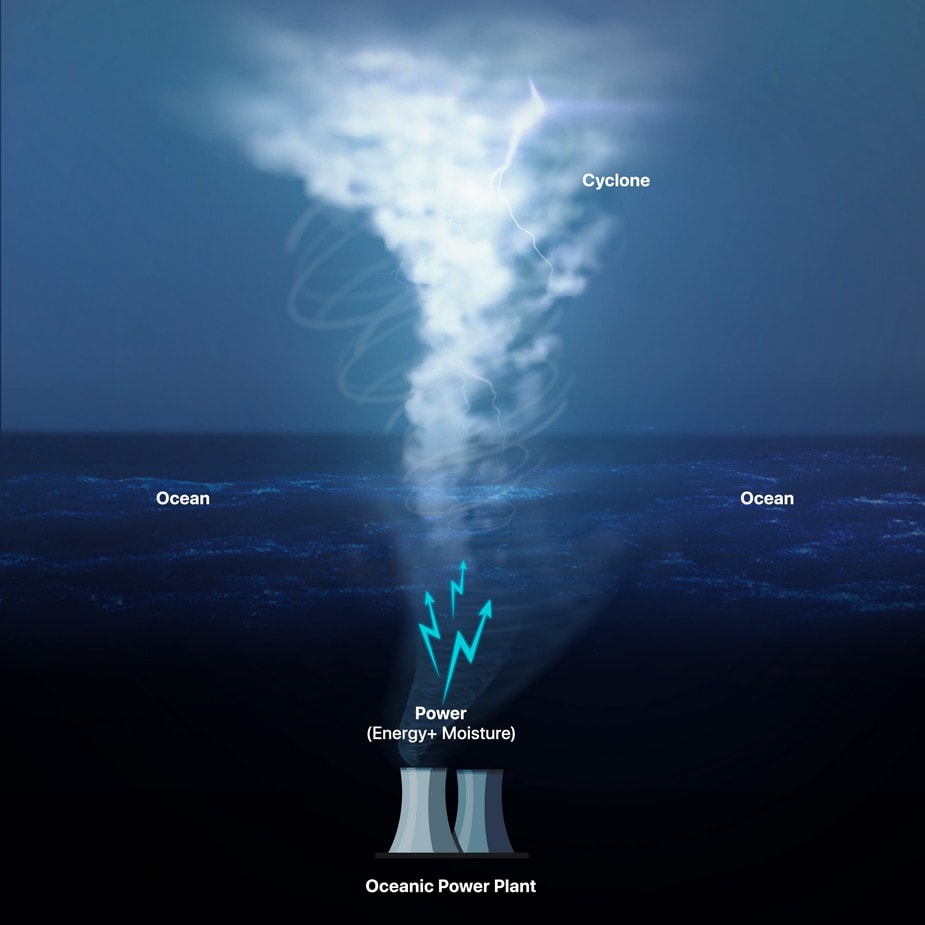Editor’s Note: Kolkata and the Sundarbans face a deadly melange of climate change impacts: intensifying heat waves and rainfall extremes, an exceptionally rapid rise in sea levels and intensifying cyclones. Chirag Dhara, a climate physicist, visited Kolkata and the Sundarbans in November 2018. He interviewed a wide cross-section of people – college students and professionals, taxi drivers and street dwellers – on their experience of changes in their city’s climate. He also spoke to experts and activists working in health, science and environment. This five-part series integrates public perception with expert opinion. It contextualizes local climate trends within country-wide and global trends, using photographs, videos, satellite imagery, infographics, concept schematics and the latest developments in climate research. Important scientific concepts have been simplified to better explain the causes and consequences of these changes. This is part four of the series. Read all the stories in the series here
Aila’s
progression in summer 2009 from the Bay of Bengal to the Sundarbans and beyond. Author:
Ramisses. Source:
JTWC. Background image: NASA.[/caption] [caption id=“attachment_6128951” align=“alignnone” width=“825”]
 Cyclone Aila at landfall on 25 May, 2009, stretching from the Bay of Bengal into India, Bangladesh and Myanmar. Image courtesy: NASA image by Jeff Schmaltz,
MODIS Rapid Response Team, Goddard Space Flight Center.[/caption] Despite its scale and destruction, the peak wind speed that Aila sustained was “only” 110 kilometres per hour (kmph), making it a “Severe Cyclonic storm”: a mid-level category on the scale of the Indian Meteorological Department. Two further categories above this level exist, the most powerful storms being the “Super Cyclonic Storms” that have sustained peak wind speeds above 220 kmph. Aila may be the most destructive storm to have hit Kolkata and the Indian Sundarbans in the past decade, but there is an unrelenting threat of far more powerful storms to hit in the future, as Bangladesh with its nearly identical low lying coastal geography, will attest to. India’s cyclone-prone east coast [caption id=“attachment_6128961” align=“alignnone” width=“825”]
 This map shows the tracks of all tropical cyclones which formed worldwide from 1985 to 2005. India’s east coast and Bangladesh are among the most active zones despite being much less so than the Atlantic and Pacific basins. Background image: NASA, Map: WPTC
track map generator by Nilfanion,
Data sources listed here.[/caption] The Bay of Bengal is a hot spot for cyclonic activity. Several cyclones hit India’s eastern coast and Bangladesh every year wreaking havoc on lives, livelihoods, and the environment. Most cyclones occur in April/May or October/November when weather conditions align in a manner most favourable for storm genesis and sustenance. Despite not being nearly as active as the Pacific and Atlantic basins in frequency,
many of the deadliest tropical cyclones in recorded history have been in the Bay of Bengal. The “Super Cyclonic” storms that hit Bangladesh in 1991 and Odisha in October 1999 were among the most powerful with sustained wind speeds up to 260 kmph, bringing storm surges up to 6 metres (18 feet) and inundating up to 35 kilometres inland with saline water. [caption id=“attachment_6129031” align=“alignnone” width=“825”]
 Hurricane Ike storm surge damage in Gilchrist, Texas in 2008. Credit: Jocelyn Augusitno/
FEMA[/caption] The 1991 storm killed over 100,000 people in Bangladesh while the 1999 storm was estimated to have killed about 10,000 in India. Millions were left homeless. Devastating as these storms were, they pale in comparison to the cataclysmic 1970 Bhola Cyclone that killed half a million in Bangladesh, at a time of political turmoil and much lower disaster preparedness. In the past two centuries,
70 percent of all cyclone-related deaths have occurred in Bangladesh and India alone. For a given size of storm, the Sundarbans are at a considerably greater risk than most other places because of several developmental and geographical factors: high levels of poverty, high coastal population density in this fertile river delta, poor infrastructure, large-scale mangrove deforestation, a funnel shaped coastline, and a nearly flat terrain with an average elevation above sea level of
less than one metre (3 feet) that storm surges can intrude deep into. What powers a cyclone and how does is relate to climate change? A fully formed cyclone is so powerful that it can span hundreds of kilometers in diameter, extend 15 kilometres into the atmosphere and travel up to 10,000 kilometers before dissipating. An “average” cyclone
consumes millions of Megawatts
of power during its lifetime of a few days, far exceeding the entire world’s electricity generation capacity during that time. Where could cyclones possibly draw such immense power from and what implications does global warming have for this power source, hence for future cyclone intensities? All tropical cyclones form over warm ocean waters and eventually dissipate after making landfall. While details include favourable wind and humidity patterns, cyclone genesis and sustenance fundamentally draws its power from water evaporating from the ocean, which gets cut off once they progress over land. Cyclones vacuum up the evaporating water, which delivers huge amounts of heat energy and moisture that keeps the storm raging. The collected moisture is transported over vast distances and dumped in intense spurts of rainfall over land. [caption id=“attachment_6129041” align=“alignnone” width=“925”]

This schematic shows how a cyclone draws its energy and moisture from the warm waters over which it forms.[/caption] The warmer the water, the faster the rate of evaporation, contributing to making storms more severe. While the relationship is more complex in the real world, this explains not just the role of global warming in intensifying storms, but even the (partial) reason why India’s eastern coast sees many more cyclones than the western coast. Q&A: Why are there more cyclones on India’s east coast? Temperatures in the Bay of Bengal are generally about
1 to 2 degrees Celsius higher than in the Arabian Sea. Small as this difference may seem, it has an outsized effect on elevating the rate of evaporation, and consequently, cyclone intensities. One major feature distinguishing the Bay of Bengal from the Arabian Sea is the massive influx of fresh water from the Ganges and the Brahmaputra rivers into the Bay that effectively help sustain higher surface temperatures there. Some of the cyclones hitting India’s east coast don’t originate in the Bay at all, but have their genesis all the way in the cyclone-active Pacific ocean. They can travel thousands of kilometers into the Bay because there are no large land masses en route to cut off the moisture supply that powers them. Cyclones will intensity in a warming world Aligned with what we would expect from how storms gather power, climate model simulations project that the frequency of the most severe cyclones will increase with global warming. Severe cyclones in the Bay of Bengal have, in fact,
increased by about 26 percent in the previous century,
as they have in the rest of the world. Powerful cyclones also
intensify quicker than they did 30 years ago.
Recent research on some of the most destructive hurricanes (another word for cyclones) in the Atlantic basin such as Katrina, Irma and Maria found that they brought 5 to 10 percent greater rainfall than they would have in a pre-industrial world (cooler by “merely” 1**°**C than the present). It is still being debated in scientific circles as to how much of these changes can be attributed directly to anthropogenic global warming since there are long-term periodic natural variations that affect cyclone intensities. Historical data records on cyclones aren’t yet long enough to be conclusive. Despite these data limitations, the basic physical concept of how cyclones are powered is clear and there is no scientific doubt that cyclones of greater intensity will become increasingly more common as our planet continues to warm. The range of cyclone impacts and the existential threat that the Sundarbans faces due to global warming Cyclones impacts occur for three major reasons:
Strong wind: High wind speeds associated with cyclones cause severe damage to dwellings, infrastructure and communications systems, and nature and environment.
Torrential rainfall and flooding: Cyclones can gather up prodigious amounts of moisture from the ocean ( billions of kilograms!) and dump much of it in a very short span of time on land. The massive flash floods that follow can drown cities, cause massive soil erosion, destroy crops and damage critical infrastructure such a roads and railways making relief work challenging or impossible as we recently witnessed in Kerala.
Storm surge: Storm surge is an abnormal (but temporary) rise in sea level that can be up to 20 feet higher than normal for severe cyclones caused by high wind speeds. It can inundate low-lying coastal areas, drown people and animals, render fresh water bodies saline, and destroy crops.
In the low lying biodiverse and densely populated Sundarbans, storm surges are a leading cause of death among both humans and wildlife. Aside from the human fatalities, many crocodiles, deer and tigers were believed to have been drowned or swept away during cyclone Aila. Saline water intrusion on the fertile soils also made farming difficult or impossible for years, leaving agricultural livelihoods in tatters. Cyclone impacts have serious health implications because of fresh water contamination and is discussed at greater length in the next article of this series. Prognosis for the future of the Sundarbans The impact of even a relatively moderate strength cyclone like Aila were so severe that many families in the Sundarbans were forced to abandon their lands and migrate permanently inland to seek livelihood. The Indian Sundarbans, as well as Kolkata, have been fortunate to not have witnessed a storm as powerful as Aila since 2009. However, the cyclone-prone nature of the region combined with increasing cyclone intensities and a disproportionately rapid sea-level rise means that it is merely a matter of time before storms more powerful than Aila strike with much greater potency. It is estimated that the most severe category cyclonic storms may double in number in the next 80 years and the rainfall they bring may increase by 30% if the present rate of global warming continues unabated. Better cyclone warning systems and shelters have been put in place since Aila. The IMD’s cyclone forecast predictions have also greatly improved. While these may save lives, they may do little to save livelihoods and the unique and endangered wildlife that the Sundarbans is home to. Pro-active, visionary adaptation measures couched in principles of risk minimisation are essential to this region. In this regard, there are lessons to learn from mechanisms successfully deployed in Bangladesh in recent decades such as an effective early warning system, extensive community awareness campaigns, cyclone shelters, coastal embankments, extensive mangrove reforestation, and a decentralised yet connected disaster response system. The author is a climate physicist currently freelancing for Firstpost_. You can get in touch with him on chirag.dhara@protonmail.ch_


)

)
)
)
)
)
)
)
)



